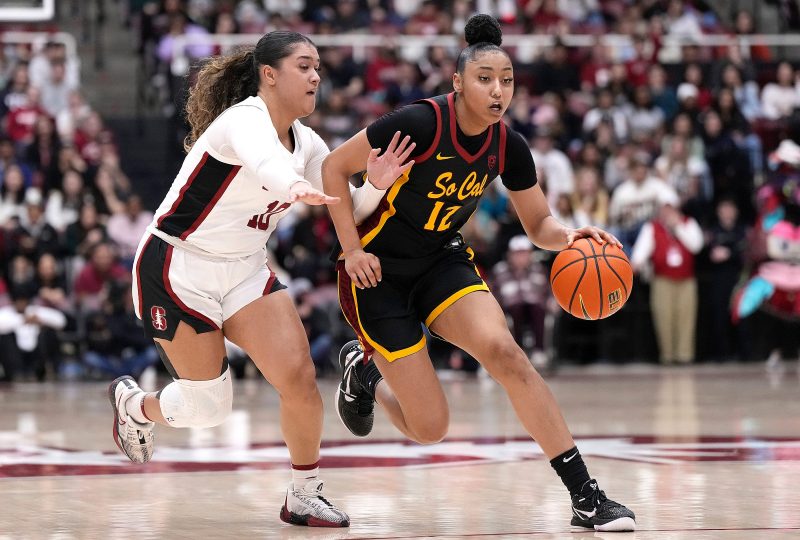Earnings call: Origin Bancorp reports growth amid profitability challenges

In the recent third-quarter earnings conference call, Origin Bancorp (NYSE:OBK), Inc. (ticker: OBNK) executives shared insights into the company’s financial performance and strategic initiatives. CEO Drake Mills highlighted the company’s asset growth from $4.2 billion at its public inception in 2018 to nearly $10 billion, while also acknowledging the challenges in achieving top-tier profitability. The company is strategically focusing on improving profitability by the end of 2024, with a detailed plan set to be unveiled in January.
Key Takeaways
- Origin Bancorp, Inc. is nearing $10 billion in assets, with a significant growth since going public.
- President Lance Hall reported a 2.3% increase in total deposits and a rise in non-interest-bearing deposits by 1.5%.
- Texas markets have shown substantial growth with $241 million in deposits and $154 million in loans.
- Loan portfolio health has improved, with a decrease in past dues to 0.49% and nonperforming loans to 0.81%.
- Net charge-offs increased to $9.5 million for the quarter.
- Diluted earnings per share for Q3 were $0.60, with a slight decrease in net interest margin to 3.18%.
- Non-interest income for Q3 was $16.0 million, with a decline due to seasonal trends.
- The tangible common equity ratio is at 10.0%, with a 5% quarter-over-quarter increase in tangible book value per share.
Company Outlook
- Management remains optimistic about growth potential and improving financial metrics.
- The company has adjusted its model to include anticipated Federal Reserve rate cuts, expecting a temporary net interest margin compression.
- Non-interest income is slightly down from Q2 due to seasonal trends.
- Non-interest expenses decreased, with expectations for Q4 expenses to remain similar to Q2 levels.
Bearish Highlights
- The company faces profitability pressures and challenges in achieving upper quartile profitability.
- There has been an increase in net charge-offs for the quarter.
Bullish Highlights
- Management is confident in capital flexibility for future opportunities.
- There is a commitment to achieving peer-level profitability and growth of 8% to 10% annually.
- Technology investments have positively impacted planning and efficiency, particularly in the Southeast expansion.
Misses
- Net interest margin has slightly decreased due to higher-than-expected deposit costs.
- Non-interest income has declined from the previous quarter due to seasonal trends.
Q&A Highlights
- Executives addressed concerns about credit deterioration, noting improvements in credit metrics.
- The company is actively working to push the Durbin Amendment impact to 2026.
- Origin Bancorp is committed to maintaining a strong credit profile as it approaches 2025.
Overall, Origin Bancorp, Inc. is experiencing a period of growth with a strategic focus on improving profitability. Despite some challenges, the company’s management is taking active steps to manage expenses, optimize profitability, and maintain a strong credit profile as it approaches a significant asset threshold.
InvestingPro Insights
Origin Bancorp, Inc. (OBNK) continues to demonstrate financial resilience and growth potential, as evidenced by both its recent earnings call and additional data from InvestingPro. The company’s P/E ratio of 11.81 suggests that it may be undervalued compared to industry peers, aligning with management’s focus on improving profitability by the end of 2024.
InvestingPro data shows that OBNK has a Price to Book ratio of 0.88, indicating that the stock might be trading below its book value. This could present an opportunity for value investors, especially considering the company’s growth trajectory from $4.2 billion in assets at its public inception to nearly $10 billion now.
An InvestingPro Tip highlights that OBNK has raised its dividend for 6 consecutive years, which may appeal to income-focused investors. The current dividend yield stands at 1.87%, providing a steady income stream alongside potential capital appreciation.
Another relevant InvestingPro Tip notes that analysts predict the company will be profitable this year, supporting management’s optimistic outlook on growth potential and improving financial metrics. This aligns with the company’s reported diluted earnings per share of $0.60 for Q3 and its commitment to achieving peer-level profitability.
For investors seeking a more comprehensive analysis, InvestingPro offers additional tips and insights. Currently, there are 5 more InvestingPro Tips available for OBNK, which could provide further depth to the investment thesis for this growing regional bank.
Full transcript – Origin Bancorp Inc (OBK) Q3 2024:
Operator: Ladies and gentlemen, good morning and welcome to the Origin Bancorp, Inc. Third Quarter Earnings Conference Call. My name is David, and I will be your Evercall coordinator. The format of this call includes prepared remarks from the company, followed by a question-and-answer session. Please note that all attendees will be on listen-only mode until the Q&A portion of the call. Also, please note that this event is being recorded I would now like to turn the conference over to Chris Reigelman, Director of Investor Relations. Please go ahead.
Chris Reigelman: Good morning and thank you for joining us today. We issued our earnings press release yesterday afternoon, a copy of which is available on our website along with the slide presentation that we will refer to during this call. Please refer to Page 2 of our slide presentation, which includes our safe harbor statements regarding forward-looking statements and use of non-GAAP financial measures. For those joining by phone, please note the slide presentation is available on our website at www.ir.origin.bank. Please also note that our safe harbor statements are available on Page 5 of our earnings release filed with the SEC yesterday. All comments made during today’s call are subject to the safe harbor statements in our slide presentation and earnings release. I’m joined this morning by Origin Bancorp’s Chairman, President and CEO, Drake Mills; President and CEO of Origin Bank, Lance Hall; Chief Financial Officer, Wally Wallace; Chief Risk Officer, Jim Crotwell; Chief Accounting Officer, Steve Brolly and our Chief Credit and Banking Officer, Preston Moore. After the presentation, we’ll be happy to address any questions you may have. Drake, the call is yours.
Drake Mills: Thanks, Chris, and thanks for being on the call. I’d like to believe that I’ve developed a reputation of being transparent and direct. We have accomplished a great deal since we went public in 2018 when we were $4.2 billion in assets. We’ve expanded our presence in Texas, grown market share in Louisiana and Mississippi, entered new markets in South Alabama and the Florida Panhandle, built an award-winning culture that attracts talented bankers, and we have diligently prepared to cross $10 billion in assets. Even with these successes, we clearly understand the work in front of us to create upper quartile profitability. We’ve been very strategic in how we prepare for crossing $10 billion in assets. We’ve made significant investments in people and processes that we knew would impact short-term profitability, but would prepare us to drive long-term value. While this preparation and rate environment have pressured our profitability, I am confident we’ve made the right decisions to lay the foundation to build long-term value. We strengthened our management team. We’ve invested in technology. We’ve enhanced our ability to gather and analyze data to drive strategic decision-making, and we have improved our risk management capabilities to name a few. Now it’s time to sharpen our focus on near-term profitability. We are laser-focused on a strategic initiative to return to acceptable profitability levels by the end of next year. We will provide detailed metrics around this initiative when we report our full year results in January. We are well into the process and are actively working with a third party to benchmark us at a granular level to our peers. We have also begun outlining specific revenue and expense opportunities to achieve our profitability goals. In the near term, we need to operate at levels in line with our peers with a defined path to outperform them. Now, I’ll turn it over to Lance and the team to talk through the quarterly results.
Lance Hall: Thanks and good morning. Over the past several quarters, I’ve talked about our bankers’ consistent focus on driving core deposit growth and expanding relationships. While the rate environment has put pressure on deposits across the banking industry, I’m pleased with the balance sheet trends we showed in the third quarter. I’m confident these trends will continue and our bankers will capitalize on opportunities, particularly in our metro Texas markets and our new Southeast market. Total deposits, excluding brokered, were up 2.3% quarter-over-quarter, which is the strongest growth we’ve seen in two years. Non-interest bearing deposits were also up, growing 1.5% for the quarter. Also, our NIB mix as a percent to total deposits remained stable at 22%. I want to speak directly to the success we’re having in our Texas markets. Our teams throughout the state continue to drive meaningful growth. Year-to-date, our Texas bankers have grown deposits, $241 million and grown loans $154 million. We see tremendous opportunity in Texas, and we have the infrastructure in place to continue to grow that business. While we look forward to detailing the profitability initiative that Drake mentioned next quarter, improving operating efficiencies is always a focus. As an example, one area we have had success in building efficiencies is in our Robotics Process Automation platform. Our RPA team continues to add value to the bank by saving approximately 3,356 hours of manual work in the third quarter. Year-to-date, this team has saved more than 9,600 hours of manual work, equivalent to just over seven full-time equivalents. I’m optimistic about the momentum that we’re seeing within our markets and how our bankers are focused on growing profitable relationships. Now I’ll turn it over to Jim.
Jim Crotwell: Thanks, Lance. As we discussed over the past several quarters, we continue to experience normalization within our loan portfolio. With that said, we are pleased to report decreases in past dues, classified loans, as well as nonperforming loans for the quarter. While we did experience an increase in net charge-offs for the quarter, year-to-date net charge-offs continue to be in line with expectations. Past due loans held for investment came in at 0.49% as of September 30th, decreasing from 0.83% as of June 30th and in line with past due levels of 0.42% as of the end of the first quarter. As you will recall, the increase in past dues as of June 30 was attributed to relationships identified as part of the questioned activity of a former banker in our East Texas market. We continue to work through this issue with our customers, including those relationships subject to the ongoing dispute. Classified loans decreased $10.8 million to 1.35% of loans as of September 30, down from 1.49% as of June 30, while nonperforming loans decreased $12 million to 0.81% as of quarter end, down from 0.95% as of the prior quarter end. The decrease in both classified and nonperforming loans was primarily driven by the $10.4 million write-down in three acquired loans as well as the settlement payment of $3.3 million on one of these loans. As to classified loans, these reductions were partially offset by downgrades of four relationships totaling $7 million, three of which were acquired loans. Net charge-offs for the quarter totaled $9.5 million, up from $2.9 million from the prior quarter. While net charge-offs for Q3 were 0.48%, year-to-date net charge-offs were 0.26% and are in line with expectations. Our credit provision expense was $4.6 million for the quarter compared to $5.4 million for the prior quarter and after considering net charge-offs resulted in a $4.9 million decrease in the allowance to $96 million. The reduction in the reserve was primarily driven by the utilization of previously established reserves. On a percentage basis, our allowance decreased from 1.27% to 1.21% as a percentage of total loans held for investments and from 1.34% to 1.28% net of mortgage warehouse. During the quarter, we completed our external loan review, which covered approximately 55% of loans net of consumer and one to four family residential loans. The results of the review were positive, resulting in no recommended downgrades to criticized or classified loans. As discussed last quarter, we continue to focus on client selection. And during Q3, we saw an additional $42 million in desired reductions. We will continue to closely monitor and manage our portfolio. With the market’s continued focus on non-owner-occupied CRE office, we continue to provide added detail on slide 13, which shows the resiliency and performance of this sector within our portfolio. As of quarter end, this segment totaled $364.7 million, average loan size of only $2.4 million, a weighted average debt service coverage of 1.34 times and a weighted average loan-to-value of 59.01%. We had no past dues, minimum classifieds and no non-performing loans and no charge-offs within this segment. As to total ADC and CRE, we continue to closely monitor our overall exposure and reflected total funded ADC and CRE of total risk-based capital at quarter end of 72% and 239%, which positions Origin with the flexibility to support our customers and provide strategic growth. I’ll now turn it over to Wally.
Wally Wallace: Thanks, Jim, and good morning, everyone. Turning to the financials. In Q3, we reported diluted earnings per share of $0.60. As you can see on slide 24, the combined financial impact of notable items during the quarter equated to a net expense of $627,000, equivalent to $0.02 in EPS pressure. On the balance sheet side, I will start with a discussion on deposits, which were down 0.3% during the quarter. Excluding brokered though, deposits grew 2.3% linked quarter, a strong quarter, as Lance mentioned. Furthermore, non-interest-bearing deposits grew 1.5% linked quarter, the first quarter of growth in NIBs since 2022. We continue to see mix stabilization in our deposits with non-interest-bearing deposits remaining flat at 22% of total deposits. On the loan side, growth in gross loans held for investment and growth excluding mortgage warehouse were both essentially flat during the quarter as our strategic focus on client selection continues to result in some planned reductions, as Jim discussed. As a result, our loan-to-deposit ratio ex-mortgage warehouse remains below our 90% target at 87.9%. We anticipate our client selection process could add some continued pressure to growth in Q4, but we continue to expect loan growth in the low single-digits for the year with deposit growth essentially matching. Moving to the income statement. Net interest margin expanded one basis point during the quarter to 3.18%, below our guidance, which was for mid single-digit expansion from an adjusted base of 3.22% in 2Q. The primary driver of this shortfall relative to our expectations was deposit costs that were higher than we anticipated as pricing pressures for new deposits did not ease as much as forecasted across our markets. While we anticipated margin expansion despite potential pressures from Fed rate cuts, our prior models considered a measured cadence of 25 basis point cuts versus our current model, which now includes the already announced 50 basis point cut in September and additional 25 basis point cuts in November and December of this year. This scenario results in a brief period of NIM compression of roughly 10 basis points, as the benefits from asset repricing lag the pressures from our floating rate loan portfolio. Assuming the Fed slows or stops easing, we still anticipate asset repricing benefits to drive NIM expansion in line with our previous expectations. Shifting to non-interest income. We reported $16.0 million in Q3. The quarter included a $221,000 gain on sale of securities. Excluding this notable item and the $6.1 million net benefit of notable items in Q2, non-interest income declined to $15.8 million from $16.4 million in Q2, due primarily to normal seasonality in our mortgage business. In Q4, we expect normal seasonal pressures in both our mortgage and insurance businesses to drive Q4 fee income to levels similar to Q4 2023. Our non-interest expense declined to $62.5 million in Q3 from $64.4 million in Q2. Excluding $848,000 of notable items in Q3 and $1.5 million in Q2, non-interest expense declined to $61.7 million from $62.9 million. While Q3 levels were better than anticipated, we still expect Q4 expense will remain at levels similar to Q2, which includes an expectation of legal and accounting-related professional services expense associated with the activity Jim discussed earlier. As such, our 2024 full year expense growth, when excluding the notable items mentioned, is still expected to be in the mid-single digits. Lastly, turning to capital. We note that our TCE ratio ended Q3 at 10.0%, up from 9.5% in Q2. Also due to continued easing of AOCI pressures and the contribution from earnings, we were pleased to report growth in our tangible book value per share of 5% quarter-over-quarter and 17% year-over-year. Furthermore, as shown on Slide 23 of our investor presentation, all of our regulatory capital levels at both the bank and holding company remain above levels considered well capitalized. As such, we remain confident that we have the capital flexibility to take advantage of any potential future deployment opportunities to drive value for our shareholders. With that, I’ll now turn it back to Drake.
Drake Mills: Thanks, Wally. As I mentioned earlier, while I’m not satisfied with where we are from a performance standpoint, I’m extremely confident in our ability to take the necessary steps to be an elite financial performer. Origin has a strong history of delivering for our shareholders, employees, customers and communities. I have spent my career building this organization, and I have every intention to see us be successful. Origin has a strong culture that has attracted best-in-class bankers, a geographic footprint that serves some of the most dynamic growth markets in the country, and our management team is deeply committed to doing what it takes to increase value for this company. Thank you for being on the call. We’ll open it up for questions.
Operator: Thank you, team. Ladies and gentlemen, at this time we will conduct a question-and-answer session [Operator Instructions] Our first question comes from Matt at Stephens Inc. Your line is open, Matt.
Matt Olney: Hi. Thanks. Good morning, everybody. I want to start on the net interest margin. It sounds like the loan repricing story is intact, no real change there, but it’s the deposit costs that were stubbornly high in the third quarter. Just want to drill down more into that. Did you get more pushback than you expected on exception pricing? Or was there other pushback with specific deposit categories? Just trying to appreciate the drivers there. And then part two, kind of moving forward, does it give you pause for your assumptions around deposit betas with down rates? Thanks.
Wally Wallace: Matt, thanks. So on the deposit beta question, there were no real surprises as far as negative surprises. If you look at our deposit balances, our deposit growth was actually higher than we anticipated. And that growth was concentrated in interest-bearing accounts. So that adds pressure to our overall deposit costs. What we’ve seen as far as the trends in pricing, they remain in line with what we had been seeing. We anticipate — well, prior to Fed moves, we would have anticipated continued stabilization and potentially even declines in the overall cost. We’re not going to slow down our deposit gathering efforts. So we will take a quarter of deposit growth being higher than we anticipated because as we’ve said, pretty consistently now that deposit growth is what governs our ability to grow loans, and we want to get back into the business of growing our loan portfolio. So we view this pressure as temporary. And then with the Fed rate cuts, we have been modeling that there would be a zero beta to be conservative in our models. So far with what we saw in the September 50 basis point cut, our deposit betas on our non-maturity interest-bearing deposits are around 40%, which is in line with historical, so better than our models. So that gives us confidence that we’ll be able to keep up on the deposit side if the Fed continues to cut.
Matt Olney: Okay. Thanks for that Wally. And just to clarify the margin outlook from here. I think you said margin compression about 10 bps in the fourth quarter. And that assumes — besides what we got into September, another 25 basis point cut in November Fed and then also in December. And then I guess there was some commentary about the margin expanding mid-single digits. Do you need a Fed pause to see that? Or do you think you could start to see some of that mid-single-digit margin expansion early next year?
Wally Wallace: We do not need a Fed pause, Matt. We’ve modeled this from anywhere from no more rate cuts to seven more rate cuts. And in all scenarios, our margin expands to levels above where we have been so far year-to-date. What we need is a measured cadence of cuts, 25 basis cuts preferably. 49% of our loan portfolio floats. When the Fed cuts 50 basis points in one meeting, that 49% prices down essentially immediately. Our loans that are maturing, they’re maturing throughout the quarter. So it takes time for the benefits of those repricing to offset what the pressure that we see on day one of a 50 basis point cut. So if we continue to get 50 basis point cuts, then you would expect to see the following quarter continued pressure on our loan yields. But as soon as the Fed pauses or slows the cadence of cuts, then those asset repricing benefits kick in. And we end up at the same end point. It’s just a matter of the short-term effect offsets because of the lagging of the repricing.
Matt Olney: Okay. All right. Understood. Thanks for the commentary Wally. And if I could just sneak one more question in for Drake. Drake, your prepared remarks were interesting and helpful. I think you mentioned achieving peer profitability in the near-term. And then there’s also a mention of achieving upper quartile peer profitability at some point. It sounds like you’re still working on these details and you’ll have more for us next quarter. What specific metrics are you focused on? And is the Board focused on? Is this an ROA or efficiency? And within the peer levels, what do you consider peer and then upper quartile within those metrics?
Drake Mills: Yes. Currently, what we’re looking at, and we’re anxious to get on with communicate and as we said in the prepared remarks that the next — in January, we’ll do that, but we are looking at every aspect of expense and revenue across all lines using internal metrics to drive what we think is peer-like profitability. And for that, right now, that’s 105, 106 or whatever that number is. But we want to get back to profitability as we were sitting at the end of 2022 going into 2023. And to do that, what we plan to accomplish in the next several quarters, not only puts us in a position to be peer-like, but it also puts us in a position once our planned growth returns. And as we’ve always talked about, we’ve built this company to grow 8% to 10% a year. We are adjusting that. But once we get back to that growth, then that will be an accelerator for us to get back to that upper quartile profitability.
Matt Olney: Okay. Thanks for the color Drake. Thanks for taking my questions. I’ll step back.
Drake Mills: Thank you.
Operator: Thank you, Matt. Our next question comes from Tim at Raymond James. Your line is open.
Unidentified Analyst: Hey guys. This is Tim in for Michael. Good morning everyone.
Drake Mills: Tim, good morning.
Unidentified Analyst: Just want to follow-up on Matt’s question around deposits and betas. Just understand you want to grow the portfolio as much as possible, but I just want to get a sense of where the relief could come from with down rates. Is there a certain mix of the portfolio that’s indexed? Are there CDs repricing in the next few quarters? Is there kind of a big relief from the roll-off rate to what you’re putting CDs on now at? Any color there would be appreciated.
Wally Wallace: Yes, we would anticipate relief across all of our deposit products. There’s no magic bullet in the time deposit portfolio where it’s going to be a really lumpy repricing benefit in any given quarter. It’s really kind of measured throughout the pace of the year. We’ve seen our non-interest-bearing deposits pretty stable in that 22% range of total deposits. Right now, I think what we would do is use any continued deposit inflows to continue to allow our brokered deposits to roll off the balance sheet. That’s our highest cost segment in the deposit portfolio. But I would really just kind of think about it as a measured cadence of deposit price improvements throughout the course of the year.
Unidentified Analyst: Understood.
Lance Hall: Yes, maybe if I could — this is Lance, — sorry to kind of go back to you and Matt’s question. I do want to kind of make it clear that from a deposit pricing perspective across all markets, that is being actively, actively managed. This is something that we’ve worked with our treasury management partners, retail partners, presidents, and we have ongoing plans for interest-bearing accounts. We’re touching every single one of them in regard to profitability of clients and understanding the competition in the marketplace. So it’s not a one-size-fits-all solution, but actively managed throughout each of our markets and which is going to, I think, do a very effective job for us in getting our deposit costs where they need to be.
Unidentified Analyst: That’s great. Appreciate it. And then back to the kind of strategic actions that you might lay out here in January. I just want to get a sense on the expense side. You hired a team earlier this year down in South Alabama. As you get over $10 billion in assets, you want to move past that number meaningfully, might be some more team lift outs, maybe some more technology spend on the horizon. Just want to get a sense where do you think those opportunities lie just as you look at the expense base right now?
Drake Mills: Yeah. For us, we — as we go through this process, it’s been amazing for me to look back and recognize the impact of our technology investments on the process of strategic planning in the directions we go. So we are — what I think using data today and more accurately looking at profitability and revenue streams across, like I said, all aspects of the institution, it gives us much better feel that we can create efficiency in the organization and still have the opportunity to expand in areas that are meaningful. I’m extremely pleased with our Southeast expansion and Nate and his team and what’s going on. They are slightly above our plan, continue to do good things. But we’re positioning ourselves at this point to really be able to take off in 2025 from a credit standpoint, a number of areas that we are working in to make sure that as we launch next year, we have everything behind us from a planning standpoint.
Lance Hall: Yeah. And this is Lance again. Maybe to kind of add on to that to your question. I think part of the evolution of this company is the impact that Wally and his team have brought in, the ability to use data in a much more meaningful way. So as we launch our plan, I think the optimization of everything is on the table as we have looked deeply into banker profitability, product profitability, branch profitability, business lines, all of that is consistently and deeply being analyzed at this point as we understand once we’re cross over the $10 billion threshold, and we kind of need to turn the jets on what that looks like from both a growth and a profitability perspective.
Unidentified Analyst: Okay. Great. And if I could piggyback one more on that. You talked about returning to that 8% to 10% growth range over time. And not asking for 2025 or 2026 guidance or anything. But just conceptually, what’s it going to take? Is it just a matter of the macro environment improving at lower rates? Or is it more specific to you guys? I just want to get a appreciate kind of how you return to that posture.
Lance Hall: Yeah. This is Lance, and Drake may have a different answer to expand on this a little bit. For me, it’s really been two things as I work with our presidents. It’s been about our loan-to-deposit ratio and driving core liquidity. That’s — we have said pretty consistently that, that’s been the governor that we’ve sort of pulled back on. We’ve had really strict client selection through this process. So it’s really been about liquidity in 10b for me. If we could stay under 10B for one more quarter, what that does to pushing Durbin into 18 months out. And then what we’ve been able to do to strengthen our balance sheet. I mean just this quarter, very proud of the deposit growth, the ability to reduce broker deposits. So we have — we’re sitting here with increasing liquidity, good loan-to-deposit ratio, really positive trends on CRE and ADC. So we are positioning ourselves, if we cross over 10B early next year with strong liquidity. And I think that sort of takes the shackles off a little bit and allows us to do what we do, which is really grow specifically with our footprint in Texas and the Southeast.
Unidentified Analyst: Great. Appreciate, you are taking my questions.
Operator: Thank you, Tim. [Operator Instructions] Ladies and gentlemen, this concludes the question-and-answer session, handing it back to Drake Mills, for any additional remarks.
Drake Mills: Yeah. Thank you each one of you for being on. Two points, one, there was a comment about credit deterioration, and I take exception of that. And certainly, I can do that and get personal. But it’s to look back on this past quarter, we’ve reduced past dues. We’ve reduced non-performers, Classifieds declined. Charge-offs driven — were basically driven by a credit that was fully reserved. In our classifieds and non-performers, most — a lot of that has been driven by a non-credit event through the questionable activity. So I am extremely pleased with where our credit positioning is. The process that we’ve gone through client selection being able to push out another $41 million of credits this quarter that really don’t fit us, not necessarily – credits. It’s really been a true indication of our commitment to go into 2025 with a very strong credit profile. The last point, we have worked diligently this year to position ourselves for deposit growth. We saw a reduction in brokered deposits — our 10B efforts through this past year has really been, like Lance said, almost have shackles on us. But the reality of it is we’re trying to push Durbin in 2026. So we’ve worked diligently to ensure that we stay under 10B this year. Our capacity to grow is well intact. Our ADC CRE is in a very strong position. Liquidity continues to increase. We’ve had strict client selection, which I said puts us in a much cleaner credit profile going into 2025. And our footprint, I would put it up against any footprint in the country. On top of that, our team, the experience, cohesiveness and what we’ve been able to accomplish very quickly in the Southeast sets us up for a very strong 2025. And that’s the work that is really starting to pay off that we’ve gone through for this past year. So again, thank each one of you for being on the call. And I look forward to seeing most of you soon.
Operator: Ladies and gentlemen, this concludes today’s Evercall. Thank you. And have a great day. The host has ended this call. Goodbye.
This article was generated with the support of AI and reviewed by an editor. For more information see our T&C.







